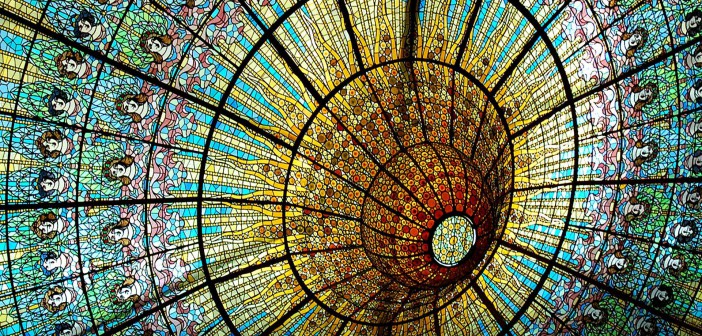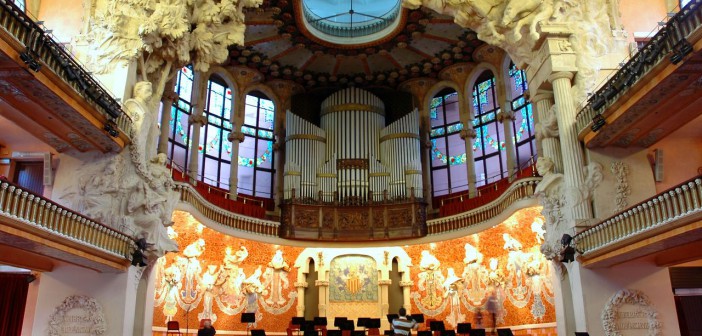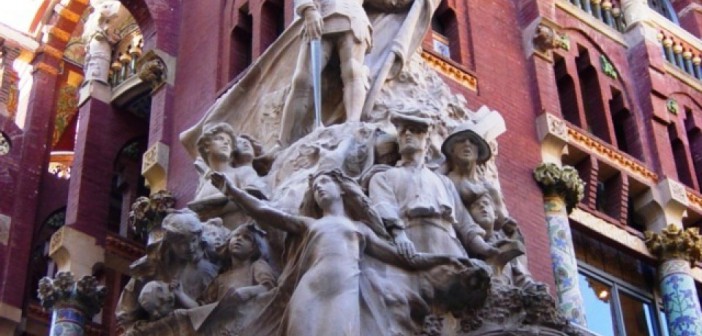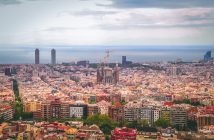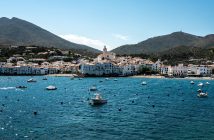A jewel of Catalan craftsmanship
This emblematic, Art Nouveau masterpiece is the only concert venue of its style to be listed as a World Heritage site by UNESCO. It was designed by the architect Lluís Domènech i Montaner and built between 1905 and 1908 for the choral Society ‘Orfeó Català ‘ as an integral part of the Catalan cultural movement known as Renaixença (Catalan rebirth). Set in La Ribera, an old district of Barcelona, the Palau de la Música is a culmination of the work of numerous local artisans and craftsmen who coordinated their skills to create the intricately detailed decoration, sculpture and metalwork for which it is famous. It has hosted world premières and remains an international landmark for symphonic and choral music.
Art Nouveau Design
The overall design principles of the building are typical of Catalan modernism. Curved lines, rich decoration and dynamic, natural forms are integral to its beauty. As you enter the main Concert Auditorium you are struck by the intricacy and richness of the detail and the diversity of symbolism displayed. You can see sculptures of luminaries such as Beethoven and Anselm Clave amidst hundreds of natural motifs of flowers, fruits and cases full of jewels, all brought together by a variety of decorative arts including mosaic, sculpture, stained glass and ironwork. Perhaps the two most dominant features of the hall are the huge organ which looms over the stage and the central skylight with a dazzling stained glass image of the sun which allows natural light to fill the auditorium.
Unique insights with a guided tour
There’s plenty more to see apart from the Concert Auditorium. On the guided tour you’ll be shown around the two smaller, more intimate concert halls (the Petit Palau and the Sala d’Assaig de l’Orfeó Català), the Sala Lluís Millet , the two-storey meeting place during intervals with its spectacular floral stained-glass windows and the grand staircase. It also includes an audiovisual tour which explains the importance of the Palau de la Música. The tour is a must, but so is experiencing the venue as it was originally intended to be enjoyed by seeing a concert there too.
“The concert hall is one of the most beautiful in the world (…) without exaggeration. It is one of its most important architectural treasures. Its pace, simple, complex, mystical and paradoxical, defies accurate description.”
-David Mackay
(Quoted in Carandell et al. 2006, 62)
by Jamie Stephens
Info:
Address:
C/ Palau de la Musica 4-6
Area:
Centre – Ciudad Vella
Tours:
Tours run every 30 minutes daily 10:00 – 3:30 (August 9:00 – 10:00) and last 55 minutes.
Website:
www.palaumusica.org
Where:

